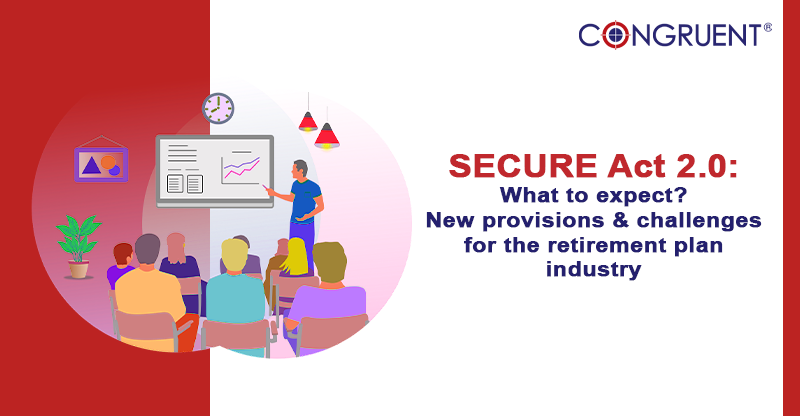
The Setting Every Community Up for Retirement Enhancement (SECURE) Act’s version 2.0 is expected to be released in December 2022. It builds on the first version of the act released in 2019, signed to improve workers’ retirement savings opportunities. SECURE Act 2.0 aims to address its shortcomings and cater to the retirement financial wellness of part-time employees.
The House of Ways and Means approved passing the act with an overwhelming majority earlier in the year. The Senate Finance Committee has voted in favor of the Enhancing American Retirement Now (EARN) Act. The Health, Education, Labor, and Pensions Committee has added provisions to the House’s version and advanced the Retirement Improvement and Savings Enhancement to Supplement Healthy Investments for the Nest Egg Act or the RISE and SHINE Act.
This Lame Duck session of Congress will likely enforce the final SECURE Act 2.0. Here is what you should know about the act and its predecessor.
What were the key changes implemented in SECURE Act 1.0?
The SECURE Act 1.0, which came into effect in January 2020, added a lot of provisions to the existing rules for retirement savings. The following are some of the important changes among them:
Required Minimum Distribution (RMD) age limit
The minimum age at which IRS-mandated withdrawal of funds from traditional or employee-sponsored Individual Retirement Accounts (IRA) should be made was increased from 70 ½ to 72. Also, individuals working beyond the age of 70 ½ can contribute to the traditional account.
Impact on Inherited IRAs
The ability for non-spouse beneficiaries to stretch out inherited IRAs over their lifetime was removed. SECURE act’s 10-year rule mandates that the funds in such IRAs be withdrawn within ten years of receipt.
Meeting childcare costs
Workers can withdraw up to $5000 per year from their retirement savings account without any penalty for the expenditures caused by having or adopting a child.
Safe Harbor Retirement Plans
Small businesses are encouraged to opt for safe harbor retirement plans that necessitate employers to contribute to employees’ 401(k) accounts instead of arranging for non-discrimination testing every year.
The 2019 SECURE Act also brought several changes to the retirement plan rules other than the above. It presented significant operational challenges with administering the plans correctly and utilizing them to benefit all stakeholders.
What are the provisions that can be expected in SECURE Act 2.0?
The industry is now gearing up to implement the SECURE Act 2.0. The bill would have the following provisions:
Employers can automatically enroll new employees in Defined Contribution plans at a pretax contribution level of 3% of employer pay, raising by 1% yearly to 10%.
The limit for catch-up contributions, indexed for inflation, is increased to $10,000 per year for participants aged 62 through 64 in 2023. Employers should permit employees to designate some or all of these as Roth contributions.
The RMD age limit will be increased to 73 in 2022, 74 in 2029, and 75 in 2032.
It will provide a statutory basis for authorizing employers to make 401(k) contributions matching the student-loan payments.
A national database will be created for tracking down the lost retirement accounts.
The 403(b) retirement plans will be enhanced with 401(k) design features.
The minimum number of years of experience that part-time employees need to qualify for contributing to employer-sponsored retirement plans will be cut down by two years.
“Hardship” withdrawals of individuals subjected to domestic abuse from their retirement savings account would be penalty-free.
Conclusion
With the advent of new AI & data-driven technology into the retirement industry, implementing changes that will be brought about by the SECURE Act 2.0, yet again, pushes forward the need to upgrade existing systems to simplify the processes.
To discuss the key issues surrounding the retirement plan industry, aspects of SECURE 2.0, and its implications, Congruent conducted the Leader Speak on Retirement Plan Industry Outlook: 2022 as part of the Congruent Webinar Series. The panelists were industry experts: Tim Rouse, Executive Director of The SPARK Institute, and Chris Gaston, Principal, Director of Government Relations of Davis & Harman. Lucas Soucy, the COO of North America, Congruent Solutions, moderated the webinar to provide valuable insights about what to expect from the upcoming SECURE Act. Watch the webinar video to learn more about SECURE Act 2.0 and the changes it will bring to the retirement plan industry.
